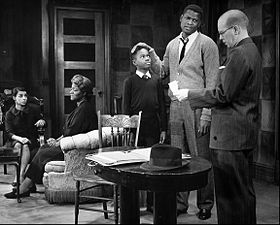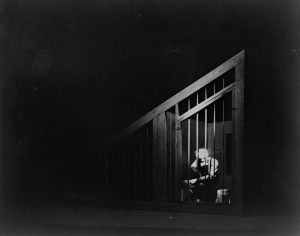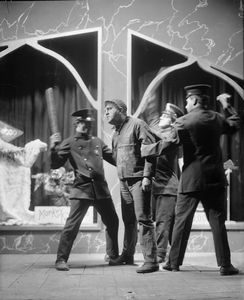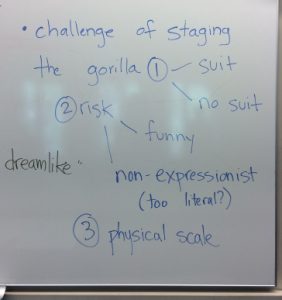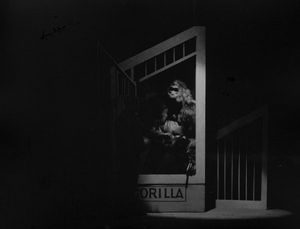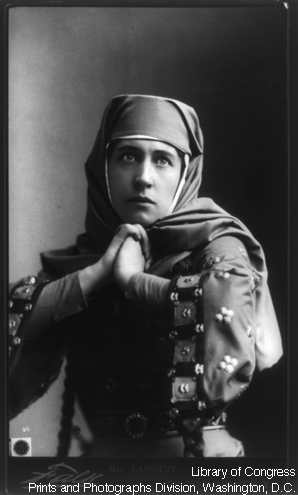Why is Lorraine Hansberry’s landmark play, A Raisin in the Sun, not found in the major drama anthologies many universities use for survey classes? Its absence is problematic, given its important place in drama history and literature, which is why we must make an extra effort to get the play into our students’ hands and into classroom learning.
There are so many ways to teach Raisin on the college level. Clearly, the approach you take depends on the learning goals for the department, the class, and the students you are teaching. Are they theatre majors or non-majors? Did they read Raisin in high school and is this, therefore, an opportunity to go deeper into content and context? Is this a US drama survey class and/or a class focusing on race? Is this a script analysis or a theatre history class?
I’ve taught A Raisin in the Sun in two different contexts. In my intro class focusing on staging race and racism, the students had not read Theodore Ward’s Big White Fog (1938) or Arthur Miller’s Death of a Salesman (1949). Therefore, our class discussion focused on the repeated tropes we had identified throughout the semester: across genres and historical periods, playwrights emphasize language and the body to mark racial specificity. In addition, Ta-Nehisi Cotes’s “The Case for Reparations” had recently been published, and therefore the topic of systemic racism and economic justice was particularly topical.
In my Modern US Drama class, students brought much more background about US history and performance context to Hansberry’s text. They had read about the Negro Little Theatre movement, the Federal Theatre Project, and were assigned Big White Fogand Death of a Salesman. Therefore, our discussion of Raisin focused on real estate, the nuclear family, masculinity, the agency of female characters, and commercial versus non-commercial theatre.
I’ve listed several assignment ideas/prompts for teaching Raisin.
- Analyze the ways in which Hansberry’s drama does or does not fit W.E.B. Du Bois’s 1926 call for “a real Negro theatre” to be “about us,” “by us,” “for us,” and “near us.” Would you categorize Raisin as a “propaganda play” in Du Bois’s definition or a “folk play” in Alain Locke’s definition?
- Compare and contrast with Theodore Ward’s Big White Fog (1938).
- What do these continuities and differences tell us about pre-WWII and post-WWII racial politics in the United States?
- How do Ward and Hansberry use time as a dramatic tool for staging changes in Black American domestic life?
- What is the significance of Chicago as a geographical location in both plays?
- How is the Great Migration staged through geography and character?
- Why include the third generation? What is at stake having children on stage?
- How is Africa taken up in each play and how does that impact the dramatic action? How does it connect to international postcolonial movements? Assign p.903 of “To Be(come) Young, Gay, and Black: Lorraine Hansberry’s Existentialist Routes to Anticolonialism” by Cheryl Higashida and discuss why the FBI would file a report focusing on Asagai’s character.
- How did the different performance contexts of the Chicago Federal Theatre Project’s Negro Unit and, two decades later, a commercial production on Broadway, impact reception?
- If you have taught Harlem Renaissance drama and the works of Langston Hughes, start with his poem “Harlem.”
- Compare and contrast with Arthur Miller’s Death of a Salesman (1949), emphasizing staging the domestic space and heterosexual marriage. This can be done, for instance, by comparing Miller and Hansberry’s very precise stage directions. I also like comparing the famous “eggs” exchange between Ruth and Walter in Act I, scene 1 of Raisin with Linda and Willy’s breakfast discussion at the top of Act II.
- Assign the original New York Times review of A Raisin in the Sun (raisin-original-review-full-page) for an analysis of content and the impact of visual culture (the review is literally marginalized in a thin column on the edge of the page). The theatre section’s lead story is “Four Examples of The Orient’s Inscrutable Influence on Broadway,” which offers the opportunity to discuss how racism manifests in a variety of ways in theatre.
- Trace Raisin‘s production history by using the Internet Broadway Database. This teaches students the production history and how to use an important research tool. It also provides the opportunity to discuss the lineage of performers who have played Lena, Ruth, and Walter Lee Younger. What has Raisin meant to the career opportunities of major African American performers?
- Explain restrictive covenant and provide the details of the historic court case Hansberry v. Lee. Have students research an article on a historic or contemporary example of housing discrimination and bring the printed article into class. Accumulate the data presented (location, type of discrimination, who the victims were) on the board or in a Google Doc. How far has the United States come or not come from what Hansberry depicted in 1959?
- Discuss Hansberry’s queer politics regarding her membership in the Daughters of Bilitis and writing in Ladder. Assign “Lorraine Hansberry’s Gay Politics” by Kai Wright and adapt this high school lesson plan “Lorraine Hansberry: LGBT Politics and Civil Rights” to your class learning goals. The lesson plan identifies this essential question for students: “What is the relationship between the civil rights movement, women’s rights, and gay rights activism?”
- Listen to Hansberry’s June 15, 1964 speech “The Black Revolution and the White Backlash,” given at a town hall meeting in New York City. What does Hansberry say about the limits of the existing legal structures for combatting injustice? How can we relate this observation to #BlackLivesMatter and current social justice activism?
- Screen excerpts from the PBS Learning Media page, “A Raisin in the Sun Revisited.” The brief Mike Wallace interview provides a clear example of the racism and sexism Hansberry faced and seems to impact students and spur productive discussion.
This post was originally published on https://catherineyoung.net/
{ 2 comments }
